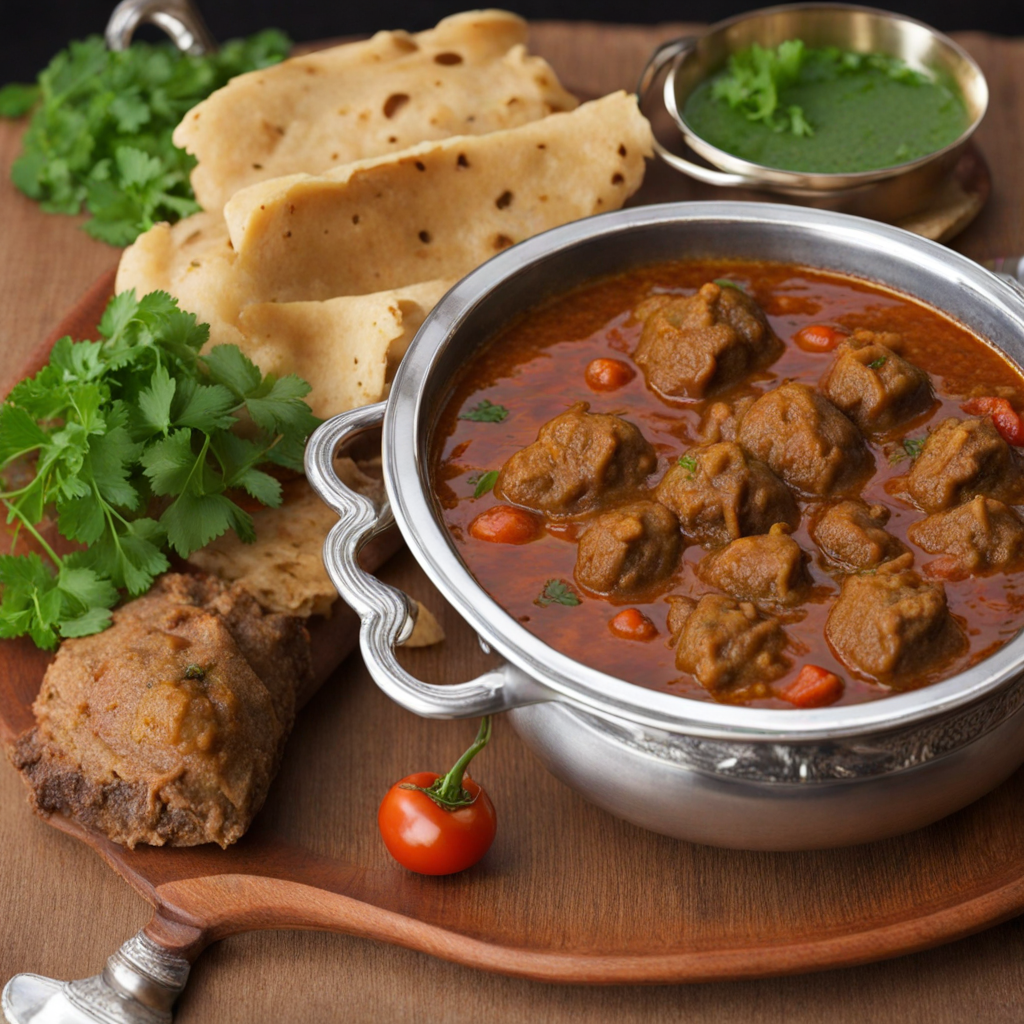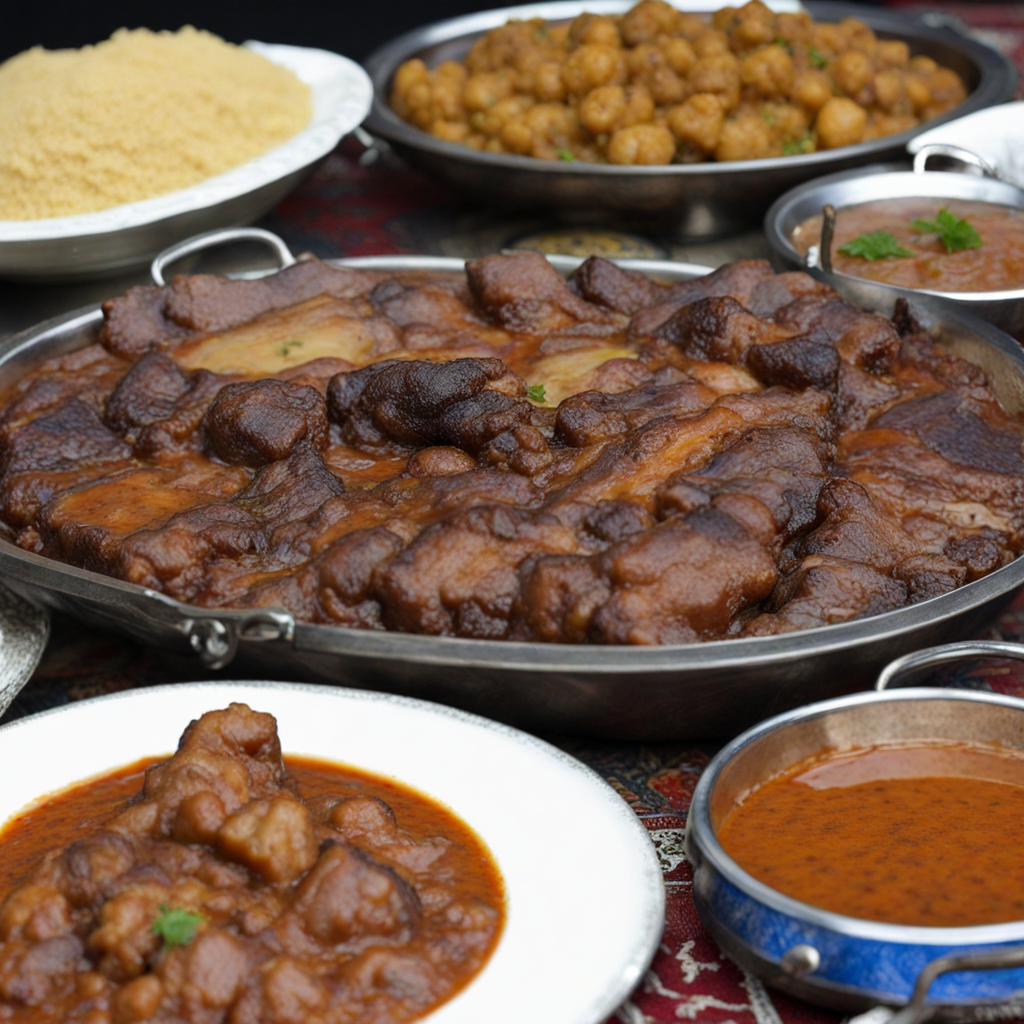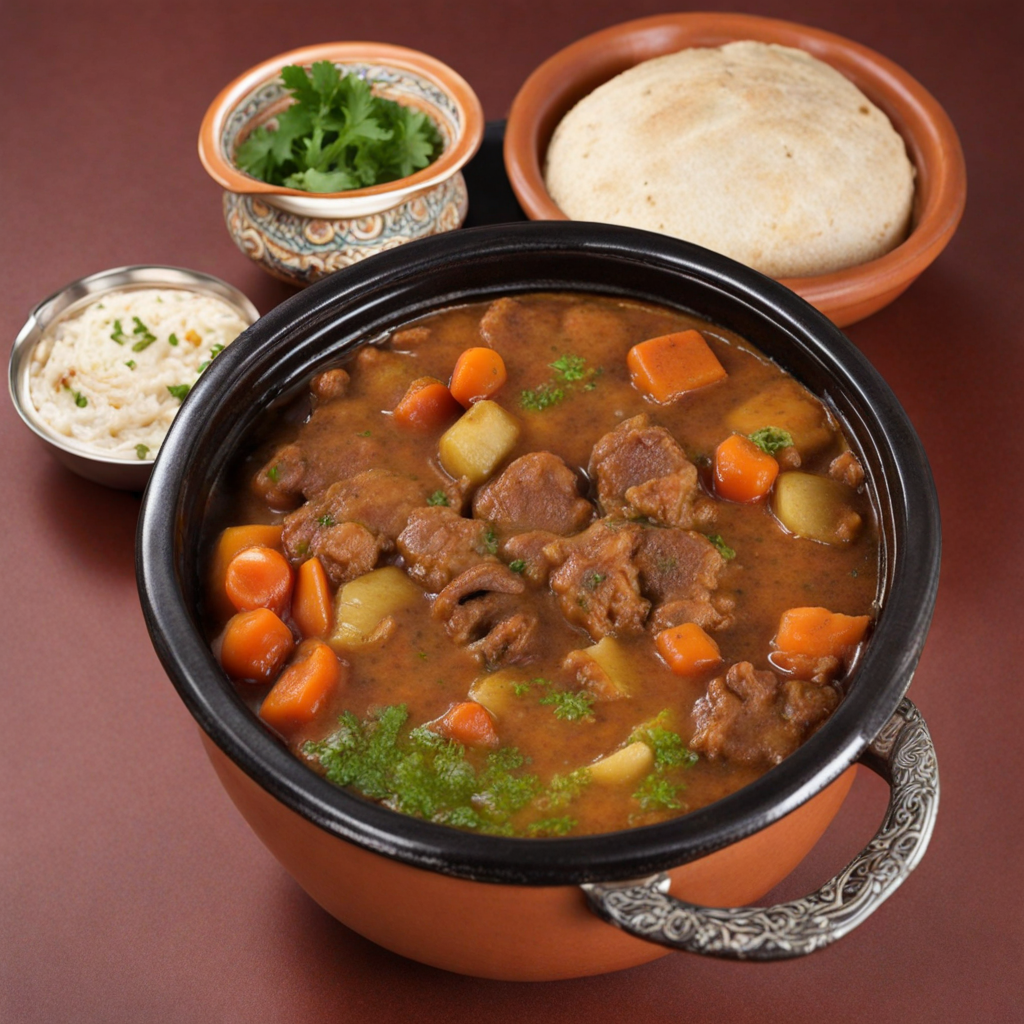Sabayah
Sabayah is a traditional Yemeni dish that beautifully showcases the rich culinary heritage of the region. It consists of thin, flaky layers of dough that are expertly cooked until they achieve a golden-brown hue, resulting in a texture that is both crisp and tender. The dough is often infused with spices and sometimes flavored with a hint of saffron, giving it a subtle warmth and depth. Each bite of Sabayah is a delightful experience, as the layers melt in your mouth, revealing the aromatic spices that have been carefully blended into the dough. What sets Sabayah apart from other flatbreads is the way it is typically served. It is often accompanied by a variety of hearty fillings such as minced meat, vegetables, and a medley of spices that enhance its flavor. The fillings are wrapped within the delicate layers of the dough, creating a harmonious balance of taste and texture. Additionally, Sabayah is frequently served with traditional Yemeni sauces or dips, such as zhoug, a spicy green sauce made from cilantro, green chili, and garlic, which elevates the dish to new heights of flavor. Sabayah is not just a meal; it is a social experience often enjoyed during gatherings and celebrations. The dish is usually shared among family and friends, symbolizing hospitality and togetherness. The act of tearing off pieces of the Sabayah and dipping them into sauces or stuffing them with fillings fosters a sense of community and connection. For anyone looking to explore a new taste, Sabayah offers a unique glimpse into the rich tapestry of Yemeni cuisine, blending flavors, textures, and traditions in each delicious bite.
How It Became This Dish
The Culinary Journey of صبايا (Sabayah) from Yemen: A Tapestry of Tradition and Taste Yemen, a country steeped in history and culture, offers a rich tapestry of culinary delights, one of which is صبايا (Sabayah). This traditional Yemeni dish, often described as a type of layered pastry or pancake, is not just a staple food; it is a profound reflection of Yemen’s history, culture, and the resilience of its people. To understand Sabayah, we must delve into its origins, cultural significance, and its evolution over time. Origins of Sabayah The origins of Sabayah can be traced back to the ancient civilizations of the Arabian Peninsula, where food was not merely sustenance but a means of expressing identity and community. Yemen, with its unique geographical location, has been a crossroads for trade and culture, influenced by various peoples including the Himyarites, Sabaeans, and later, the Ottomans and the British. This melting pot of influences has shaped Yemeni cuisine, and Sabayah is a prime example of this culinary intermingling. Traditionally, Sabayah is made from a simple mixture of flour, water, and salt. The dough is rolled out into thin layers, often interspersed with ghee or oil, and cooked on a griddle. The use of ghee or oil not only enhances the flavor but also adds a richness that makes this dish incredibly satisfying. While the basic recipe has remained constant, regional variations exist, incorporating local spices, herbs, and even fillings, such as sweetened dates or savory meats, reflecting the diverse agricultural bounty of Yemen. Cultural Significance Sabayah is more than just food; it is an integral part of Yemeni culture and hospitality. Often served during family gatherings, celebrations, and religious occasions, this dish embodies the spirit of togetherness that is central to Yemeni social life. The act of sharing Sabayah often brings families and communities together, fostering bonds that are essential in a country where hospitality is a revered tradition. In Yemen, meals are commonly communal affairs. The presence of Sabayah on the table signifies not only abundance but also a gesture of goodwill and hospitality. It is often accompanied by honey, which adds a touch of sweetness and symbolizes prosperity. The dish is frequently paired with traditional Yemeni coffee (qahwa) or spiced tea, creating a harmonious blend of flavors that enhances the overall dining experience. Development Through Time As Yemen has evolved through the centuries, so too has Sabayah. The dish has adapted to changing tastes, availability of ingredients, and cooking methods. In the past, the preparation of Sabayah was a labor-intensive process, often involving the entire family. Women would gather to make the dough, roll it out, and cook it on large flat griddles. This communal aspect of preparation not only reinforced familial ties but also ensured the transmission of culinary skills and traditions from one generation to the next. However, with modernization and urbanization, the traditional methods of preparing Sabayah have undergone transformations. Urban centers in Yemen have seen the emergence of small eateries and street vendors specializing in Sabayah, making it more accessible to a broader population. These establishments often serve Sabayah in innovative ways, incorporating contemporary flavors and presentations. The traditional dish has thus evolved into a versatile street food, appealing to younger generations while maintaining its cultural roots. Regional Variations and Modern Influences Throughout Yemen, regional variations of Sabayah showcase the diversity of the country’s culinary landscape. In the highlands, for instance, Sabayah may be made thicker and served with a side of stewed meats or spicy sauces. In coastal areas, the dish may incorporate local seafood flavors. Additionally, in urban areas like Sana’a and Aden, chefs have started experimenting with fusion dishes, blending traditional Sabayah with international influences, such as incorporating cheeses or herbs from Mediterranean cuisines. The global diaspora of Yemenis has also played a role in the evolution of Sabayah. As Yemenis have settled in countries around the world, they have brought their culinary traditions with them. In places with significant Yemeni communities, such as Saudi Arabia, the United States, and the United Kingdom, Sabayah can be found in restaurants and homes, often adapted to local tastes. This globalization of Yemeni cuisine has led to an increased appreciation for Sabayah and has contributed to a wider recognition of Yemen's rich culinary heritage. Conclusion: The Resilience of Tradition Today, Sabayah stands as a symbol of Yemen's rich culinary legacy, embodying the resilience and adaptability of its people. While it has transformed in various ways, its essence remains unchanged—a dish rooted in tradition, culture, and community. The continued popularity of Sabayah in Yemen and among the global Yemeni diaspora attests to its enduring appeal. As Yemen faces challenges, including political strife and economic hardship, the culinary traditions, including Sabayah, serve as a source of pride and identity for its people. It is a reminder of the country's rich history and the importance of communal bonds in times of adversity. The act of making and sharing Sabayah transcends mere nourishment; it fosters unity, continuity, and a sense of belonging. In conclusion, Sabayah is more than just a dish; it is a living testament to Yemen's history, culture, and the spirit of its people. From its humble beginnings to its place on modern tables, Sabayah continues to nourish not just the body, but also the soul, connecting generations and communities through the shared love of food. As culinary enthusiasts and food historians explore the flavors of Yemen, Sabayah will undoubtedly remain a central piece of this rich culinary puzzle, inviting all to experience its warmth and hospitality.
You may like
Discover local flavors from Yemen







